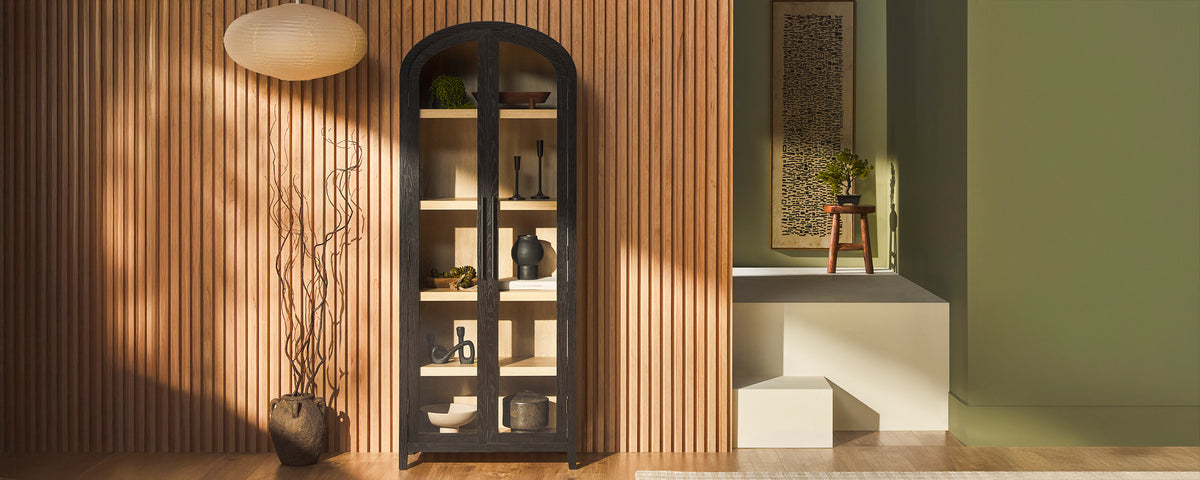Wedding Colors with Blue
Look no further for your special day's "something blue" than your very own wedding colors. With a shade for every season, blue is a timeless and versatile member of the rainbow. If you are stumped on which colors to pair with this cool hue, some basic color theory can walk you down the aisle. Here are Walker Edison's suggestions for blue wedding color combos.

Monochrome: blue, bluer, bluest
To create a monochrome palette, various shades and tints of the same blue hue are used to create one cohesive group. This type of combination is polished, mature, and subtly intriguing. A good rule of thumb is to choose three versions of one blue—a dark shade, a mid-tone, and a light tint—to convey an intentionally monochrome look without overwhelming your surroundings. The darkest and lightest colors contrast satisfyingly while the mid-tone ties them all together.

Contrasting Complementary: indigo and blush, dusty blue and rust orange
Complementary colors are found on opposite sides of the color wheel, and they contrast when they are opposite tints or shades. Blue's complement is orange. Instead of pairing them as pure hues, which can compete or look elementary, make one color lighter and the other darker to create some elegant contrast. Contrasting complementary wedding palettes are very versatile, timeless, and look beautiful during all seasons.

Same-Shade Complements: navy and burgundy, peach and baby blue
Use complementary colors in similar tints or shades to emphasize your wedding's mood. Dark complementary colors invite a warm, cozy, and luxurious ambiance to your venue. Dark-shade combinations like navy and burgundy are often used during fall and winter weddings to portray the deepening seasons. Light-tint complements are airy, refreshing, and soft. Colors like peach and baby blue are popular during spring and summer for their refreshing buoyancy.

Bright and Saturated: aqua and tangerine
These colors remind us of a tropical destination wedding. Using two vivid complementary hues like aqua and tangerine sets the tone for an energetic, playful, and bright atmosphere. Saturated colors are perfect for summer weddings when the world is at its brightest.

Single Color: cornflower blue, turquoise, peacock blue, or dusty blue
For the couples who want to keep things simple, make a statement by choosing just one of your favorite blues. It can be easy to get overwhelmed with options, so we recommend the following colors for each season: cornflower blue in the spring for a vivid, yet soft display; turquoise in the summer for a bold punch; deep peacock blue in the fall as we shift toward coziness; and pale dusty blue for a breathless winter wonderland wedding.

Analogous Colors: baby blue and sage green, navy blue and lavender
Analogous colors are found next to each other on the color wheel. On either side of blue sit purple and green. These combinations appear more subtle than a complementary set, so they're great for delicately incorporating more color into your wedding palette. A soft baby blue with a sage green is ideal for all those romantics out there. For the passionate, flirty couple, lavender and navy are both playful and elegant.

Neutrality: blue + neutrals
Neutrals will give your wedding more depth without distracting from the main event. They are inherently versatile, and each will convey a different energy. Go for a coastal vibe by pairing light blue with a sandy tan, a silvery winterscape with midnight blue and dove grey, or a cozy autumn look with teal and warm hazelnut brown.

Wild Card: blue and gold
Blue and gold may not follow the traditional rules of what makes a color combo satisfying, but it is striking nonetheless. The shade(s) of blue you use will determine the mood you set. A deeper, more saturated blue looks regal when combined with gold, while a lighter, less saturated tone looks whimsical and heavenly. Plus, metallic finishes have the benefit of adding depth and shine to your big day.

Plus 1: How to build your palette
If you have two or three colors picked out but are stumped on how to top off your combination, one resource is your very own bouquet. Colors you find in the leaves and stems of your florals, like dark green, dusty eucalyptus, or woody browns, create to a lovely palette that ties together your decorations.
Multiple color principles can also be stacked to create a stunning palette. If you already have a blue and a neutral, choose a color that complements and/or contrasts your main blue hue. If you want to balance two or more rich colors, add in some neutrals or contrasting tints to anchor the palette.
Is blue the color of your dream wedding? Show us photos from your big day or vision boards of your future ceremony by tagging Walker Edison on social media.


